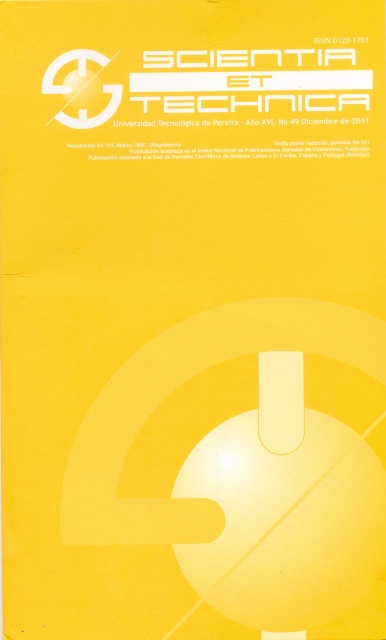Metodología para el diseño de autómatas finitos con salidas en lenguaje ladder bajo elestándar IEC 61131-3
DOI:
https://doi.org/10.22517/23447214.1523Abstract
Los autómatas1 de estados finitos (AF) constituyen una metodología de análisis de autómatas comúnmente empleada en el diseño de sistemas lógicos secuenciales. Ellas se pueden interpretar como una subclase de las redes de Petri. En los sistemas lógicos secuenciales se distingue entre su funcionamiento síncrono y asíncrono, seleccionando normalmente la operación síncrona con flancos de un reloj, sin embargo en la implementación de AF en lenguaje ladder no es práctico hacer sensible las entradas de un automatismo a los flancos de un reloj. En el presente artículo se opta por un enfoque asíncrono, se discute una metodología general para la implementación de AF con salida en lenguaje ladder y se afronta el reto de eliminar posibles transiciones no deseadas.Downloads
Downloads
-
Vistas(Views): 1222
- PDF (Español (España)) Descargas(Downloads): 629
Published
How to Cite
Issue
Section
License
Copyrights
The journal is free open access. The papers are published under the Creative Commons Attribution / Attribution-NonCommercial-NoDerivatives 4.0 International - CC BY-NC-ND 4.0 license. For this reason, the author or authors of a manuscript accepted for publication will yield all the economic rights to the Universidad Tecnológica of Pereira free of charge, taking into account the following:
In the event that the submitted manuscript is accepted for publication, the authors must grant permission to the journal, in unlimited time, to reproduce, to edit, distribute, exhibit and publish anywhere, either by means printed, electronic, databases, repositories, optical discs, Internet or any other required medium. In all cases, the journal preserves the obligation to respect, the moral rights of the authors, contained in article 30 of Law 23 of 1982 of the Government Colombian.
The transferors using ASSIGNMENT OF PATRIMONIAL RIGHTS letter declare that all the material that is part of the article is entirely free of copyright. Therefore, the authors are responsible for any litigation or related claim to intellectual property rights. They exonerate of all responsibility to the Universidad Tecnológica of Pereira (publishing entity) and the Scientia et Technica journal. Likewise, the authors accept that the work presented will be distributed in free open access, safeguarding copyright under the Creative Commons Attribution / Recognition-NonCommercial-NoDerivatives 4.0 International - https://creativecommons.org/licenses/by-nc-nd/4.0/deed.es license.



